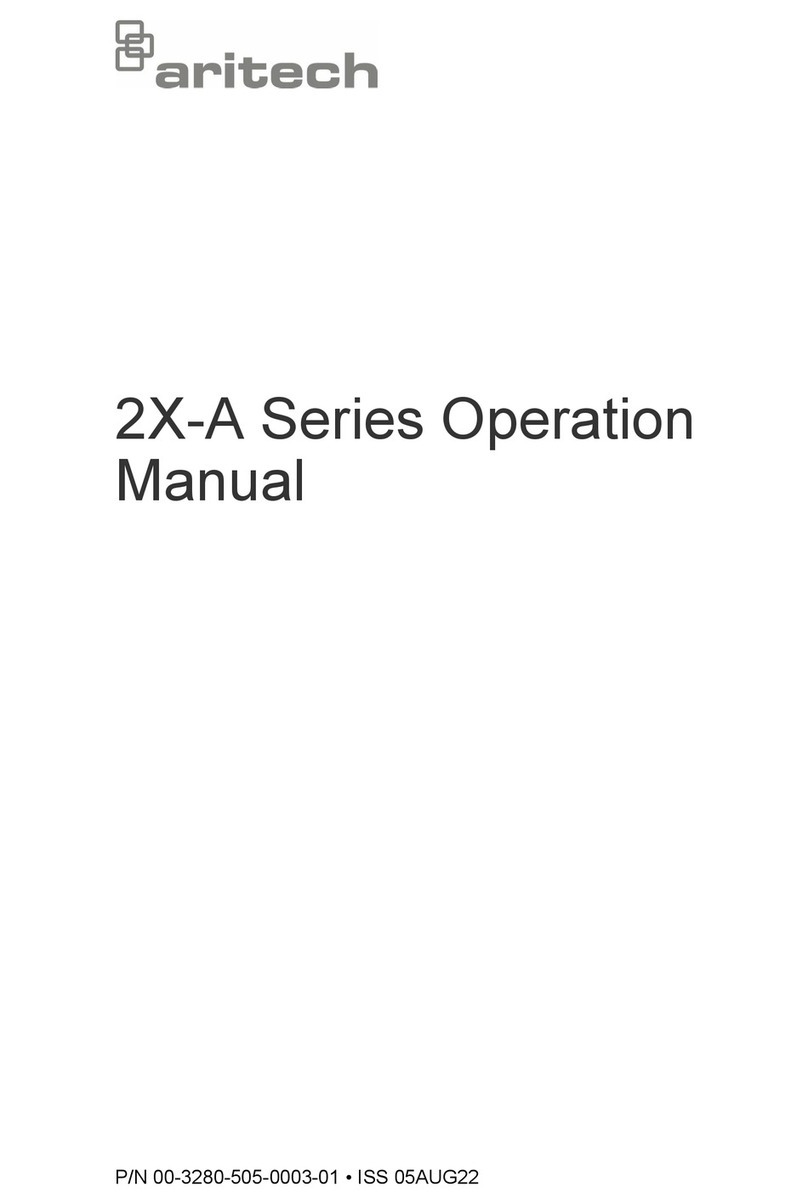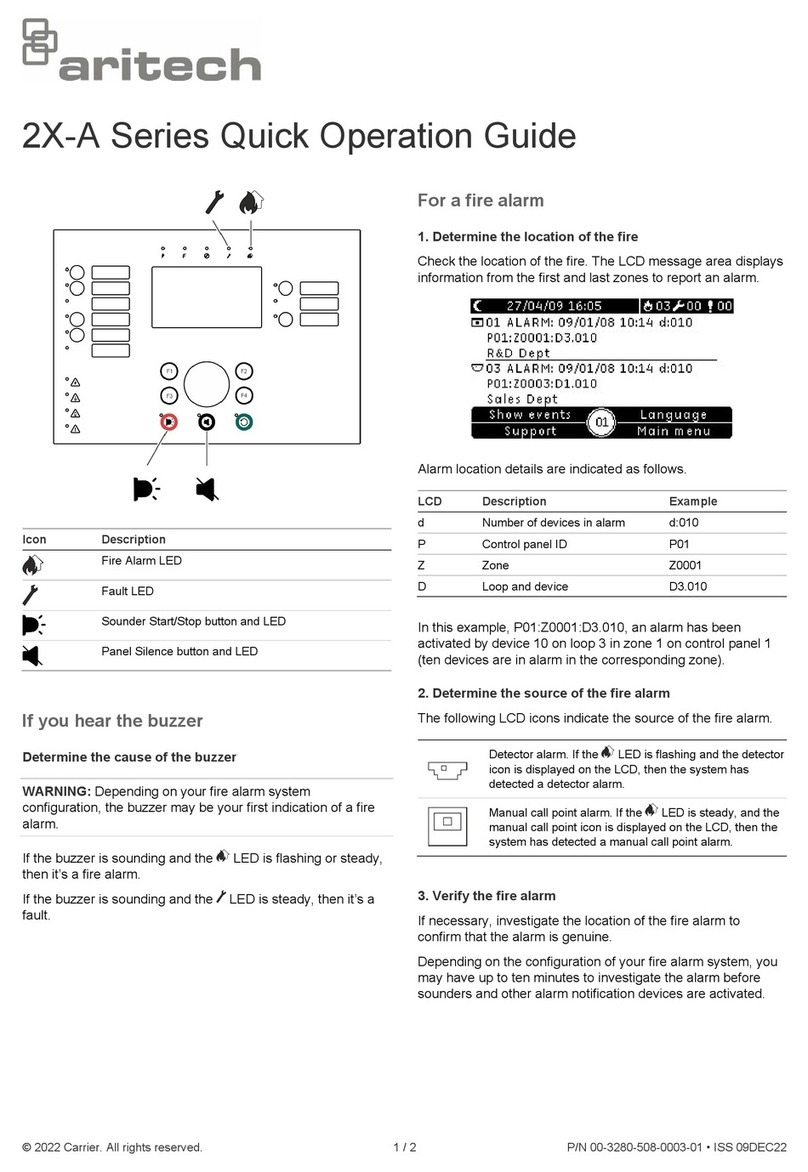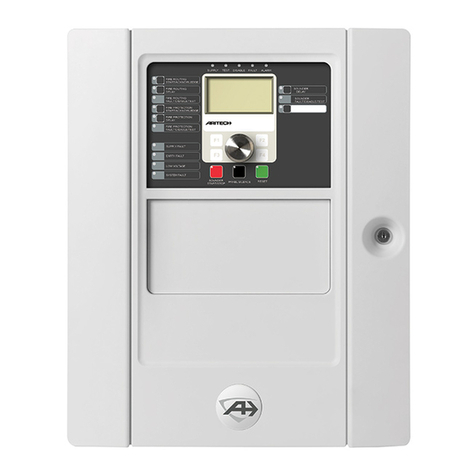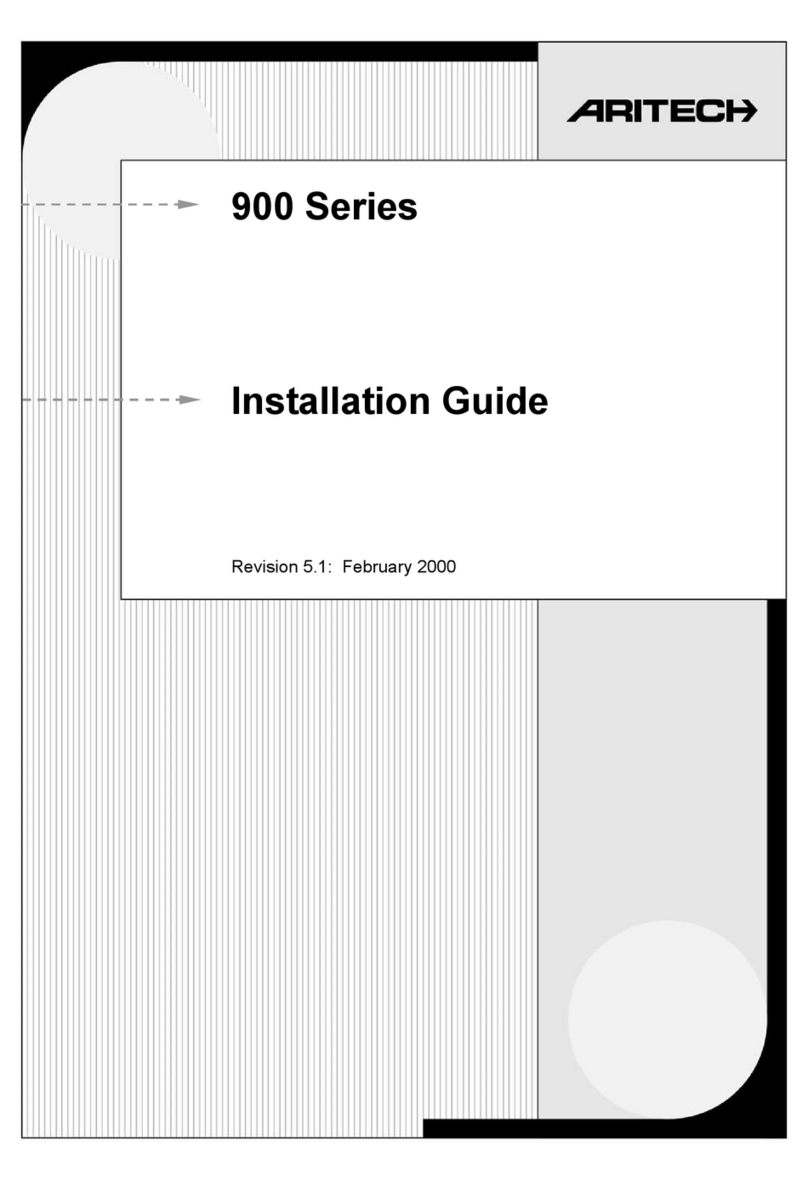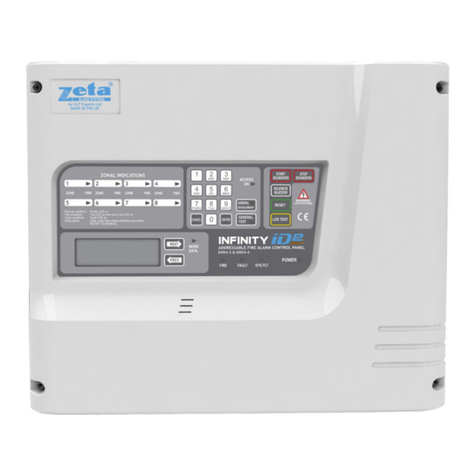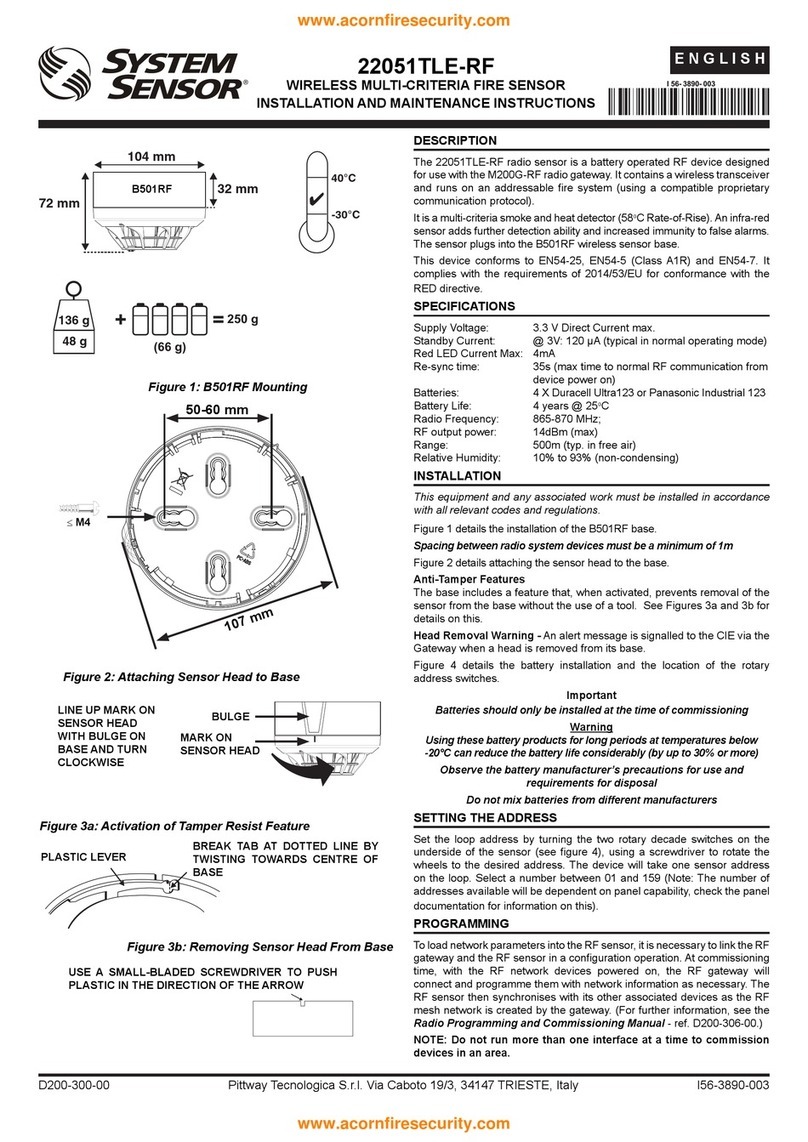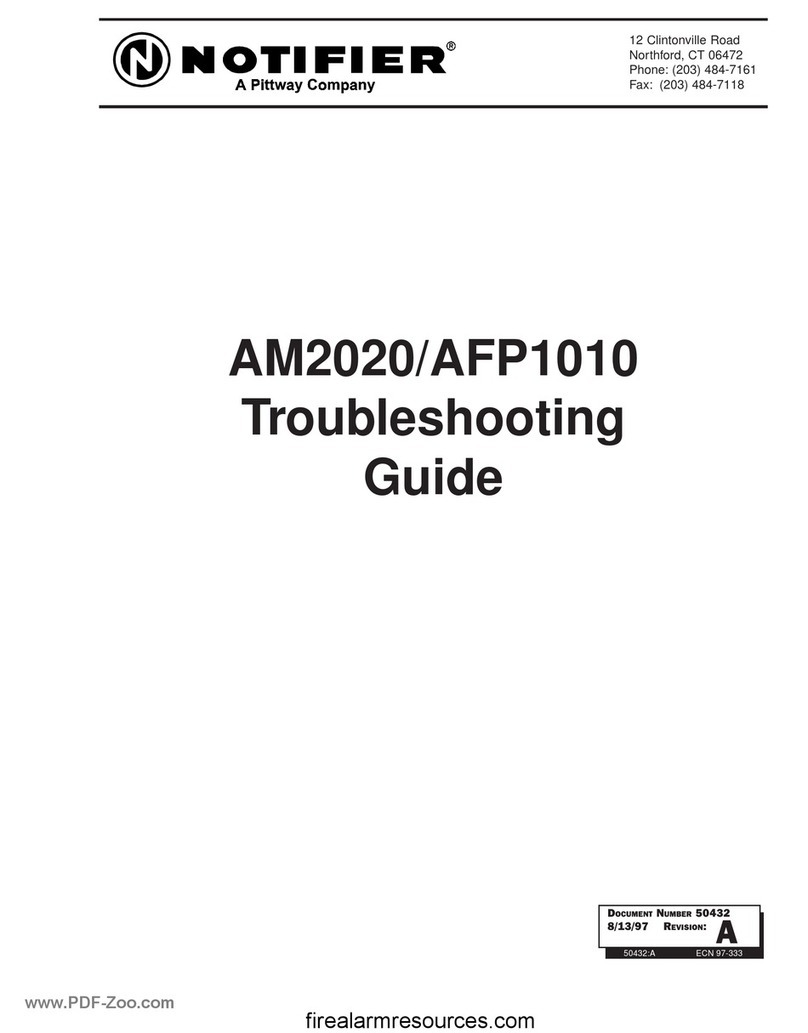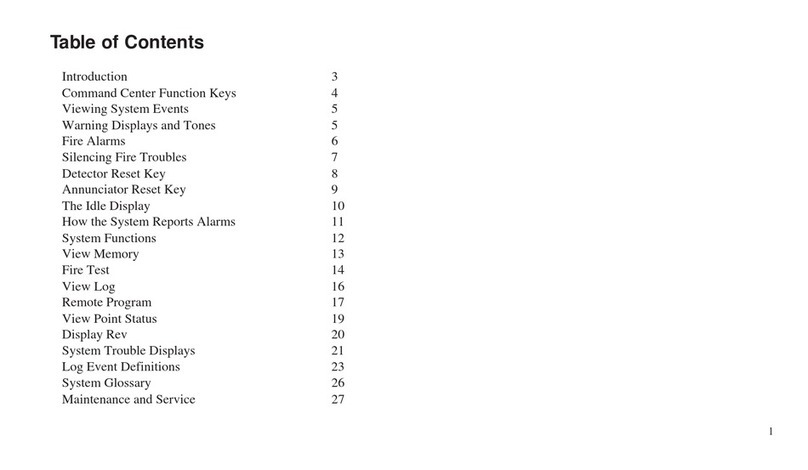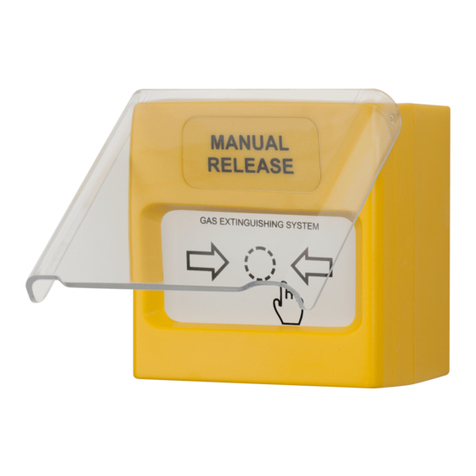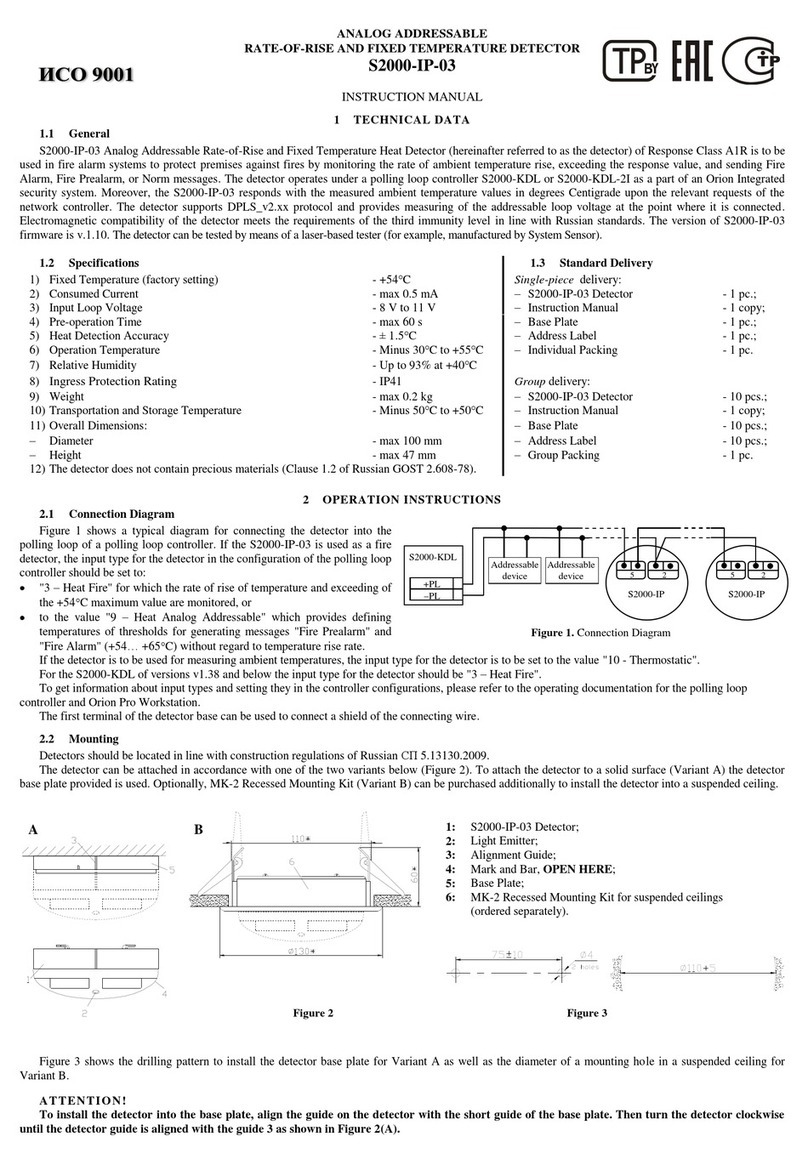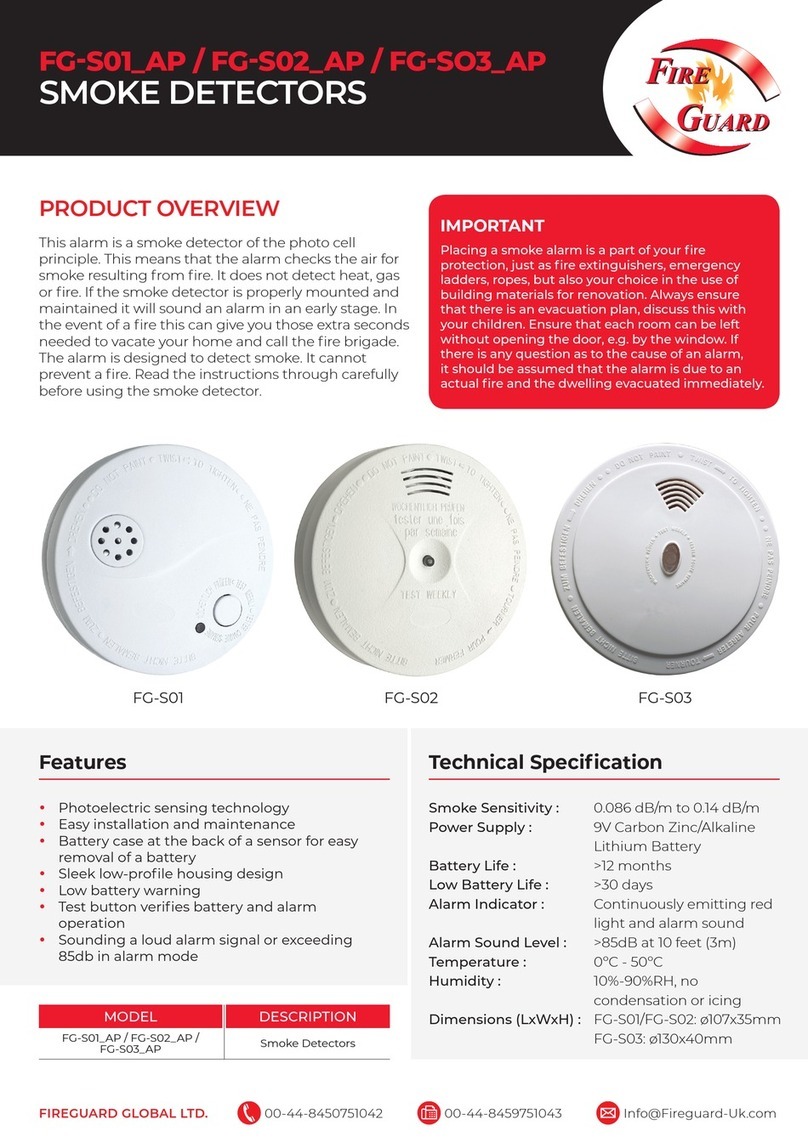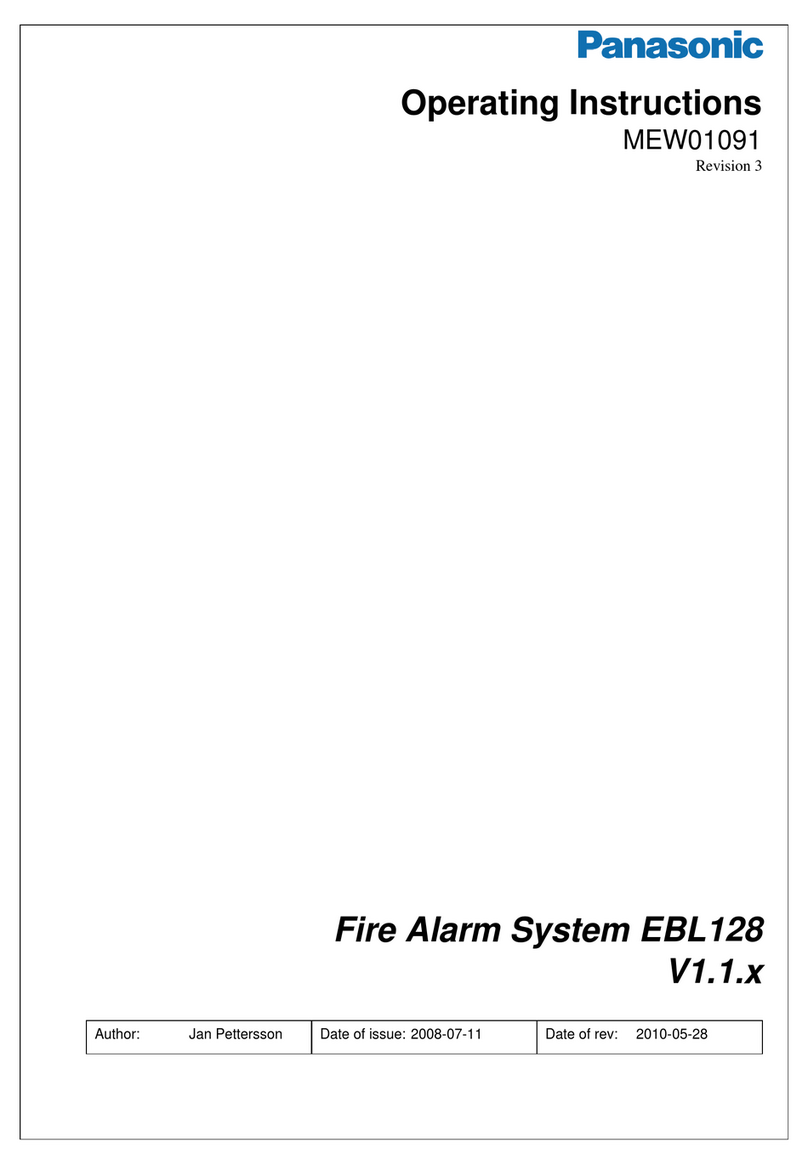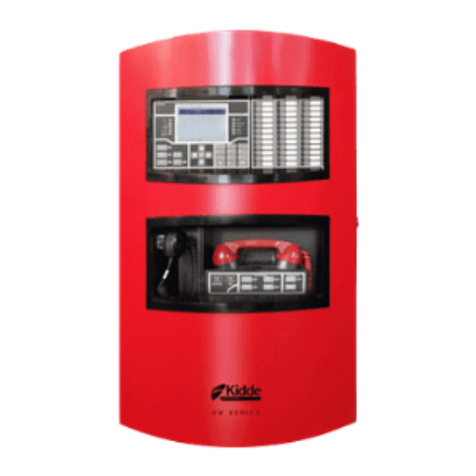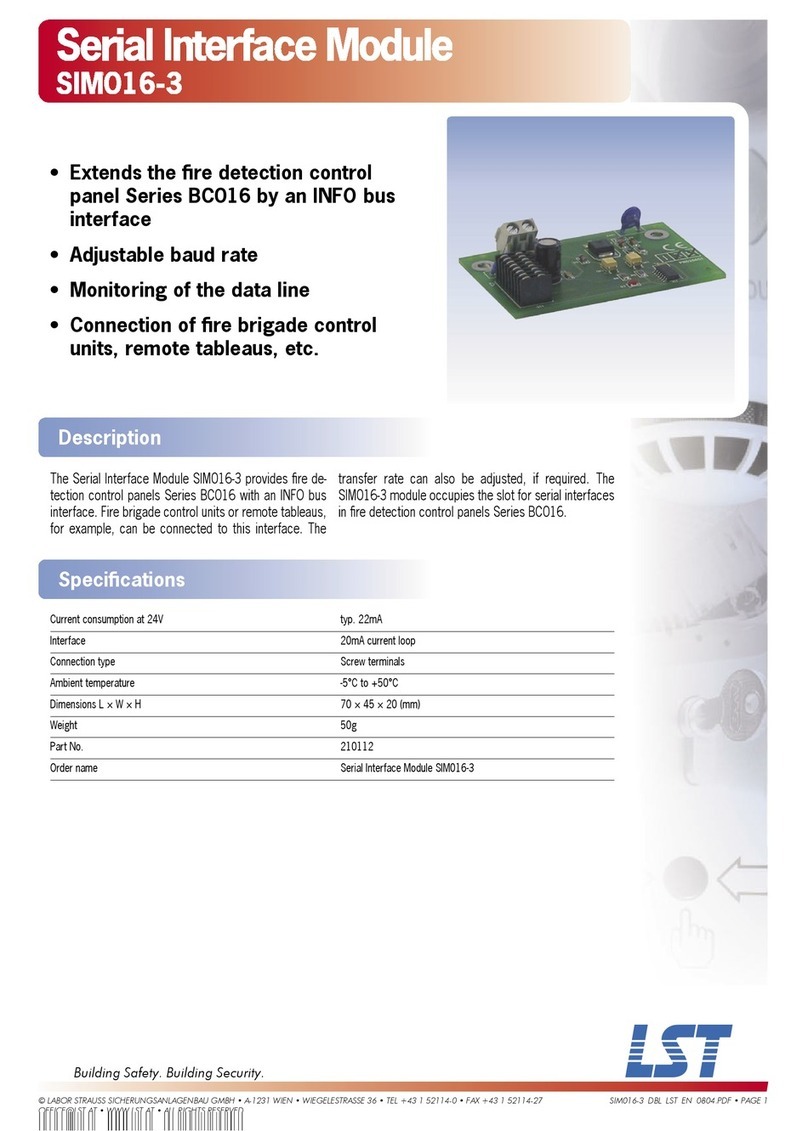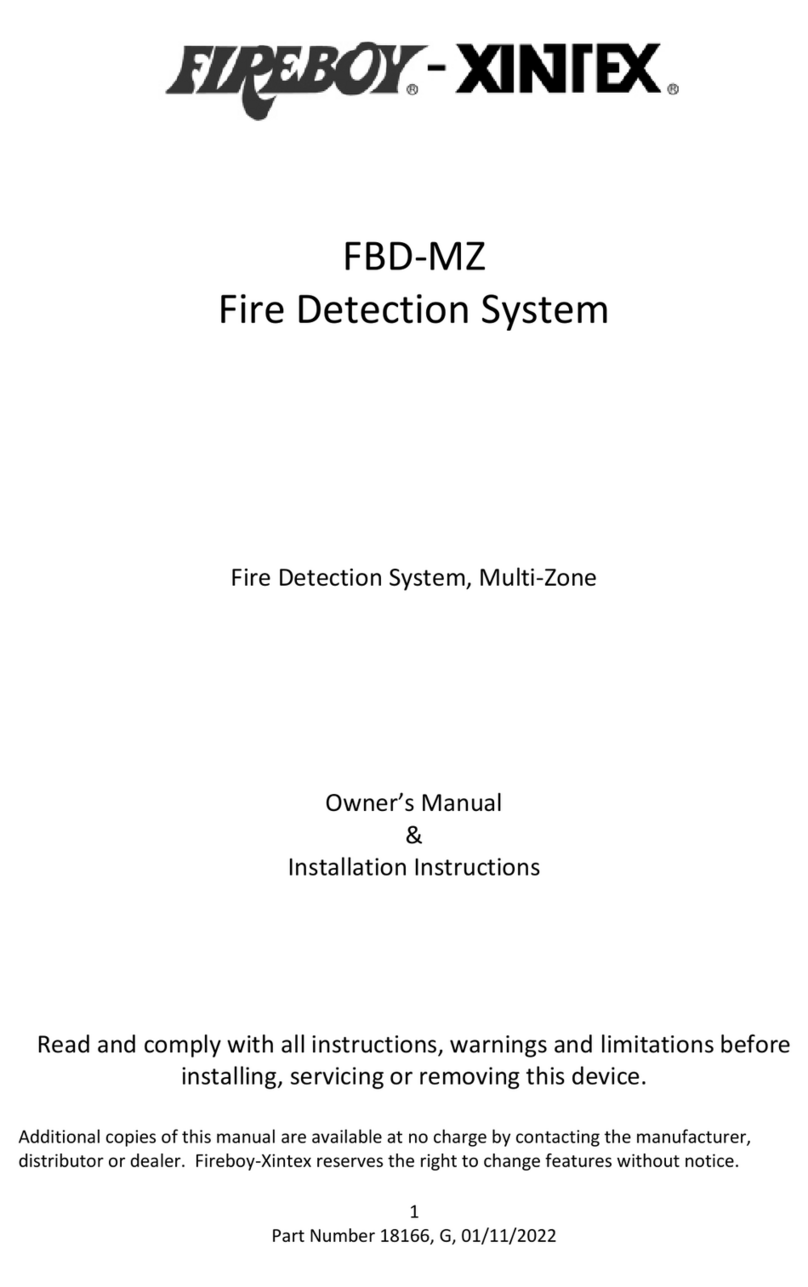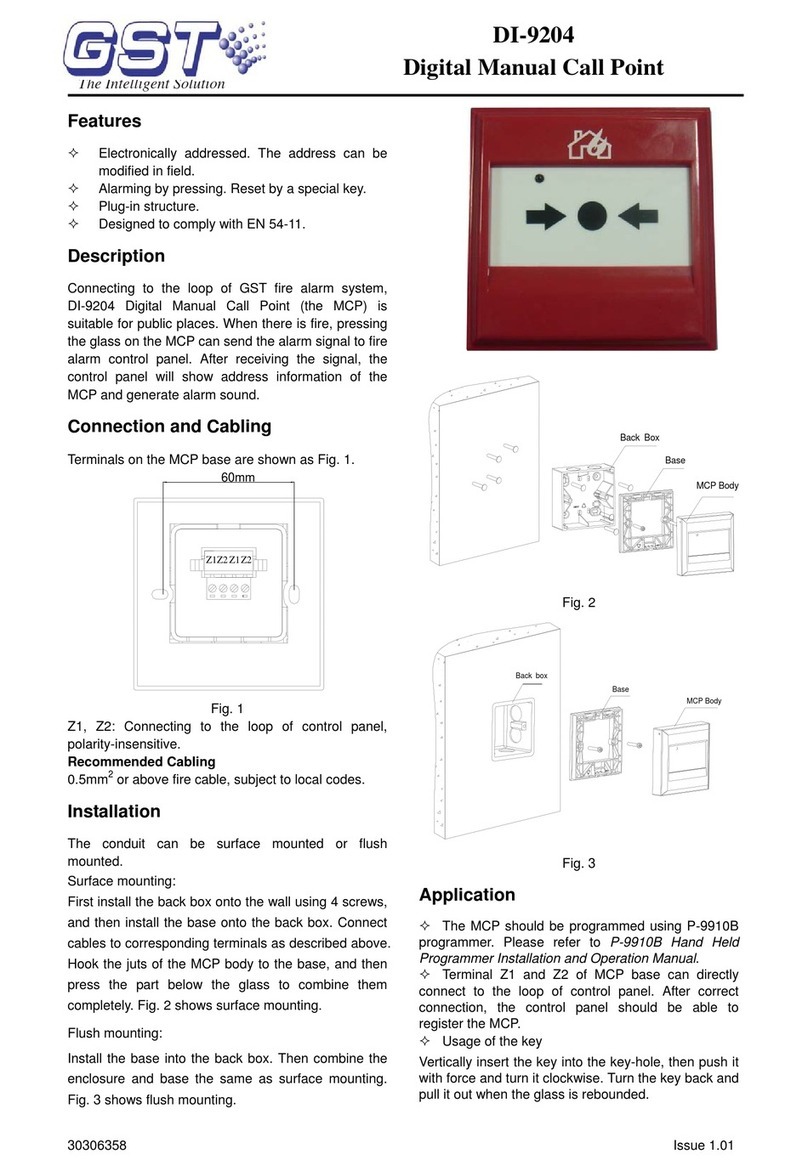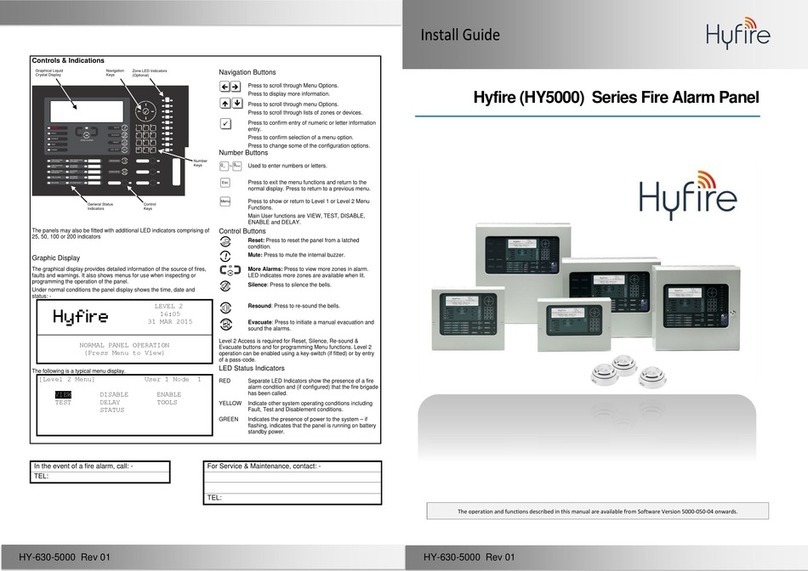
6
/LED LED colour Description
Fire Routing Delay
button and LED
Yellow Enables or disables a previously configured fire
routing delay. Cancels a delay as it counts down
and activates fire routing.
A steady LED indicates that a delay is configured
and enabled. A flashing LED indicates that a delay
is counting (fire routing is activated when the
configured delay elapses or when the delay is
cancelled).
The countdown for an active (counting) fire routing
delay or extended fire routing delay is also
displayed on the product LCD (see Figure 3 on
page 9):
•When a fire routing delay is counting (and has
not been exte
nded), the LCD displays FR in T1:
xxx sec.
•
When an extended fire routing delay is counting
(investigation time), the LCD displays FR in T2:
xxx sec.
Fire Routing
Fault/Disabled/Test
LED
Yellow Indicates a fire routing fault, disablement, or test.
A flashing LED indicates a fault. A steady LED
indicates a disablement or a test.
Fire Protection
On/Acknowledged
button and LED
Red Cancels a previously configured delay as it counts
down and activates fire protection.
A flashing LED indicates that fire protection has
been activated. A steady LED indicates that the fire
protection signal has been acknowledged by the
remote monitoring equipment.
Fire Protection Delay
button and LED
Yellow Enables or disables a previously configured fire
protection delay. Cancels a delay as it counts down
and activates fire protection.
A steady LED indicates that a delay is configured
and enabled. A flashing LED indicates that a delay
is counting (fire protection is activated when the
configured delay elapses or when the delay is
cancelled).
Fire Protection
Fault/Disabled/Test
LED
Yellow Indicates a fire protection fault, disablement, or test.
A flashing LED indicates a fault. A steady LED
indicates a disablement or a test.
Sounder Delay button
and LED
Yellow Enables or disables a previously configured
sounder delay. Cancels a delay as it counts down
and activates sounders.
A steady LED indicates that a sounder delay is
configured and enabled. A flashing LED indicates
that a sounder delay is counting (sounders are
activated when the configured delay elapses or
when the delay is cancelled).
/Test
Yellow Indicates a sounder fault, disablement, or test.
A flashing LED indicates a fault. A steady LED
indicates a disablement or a test.

